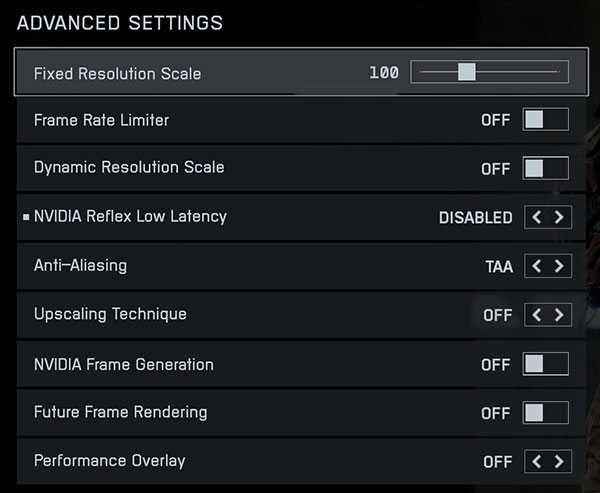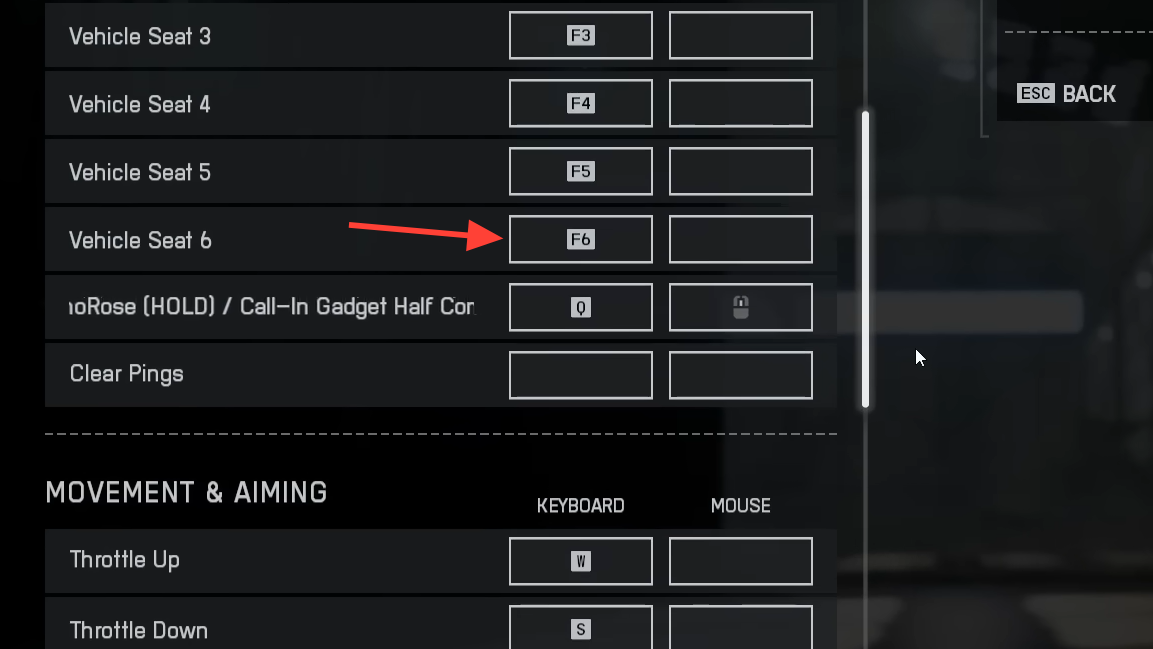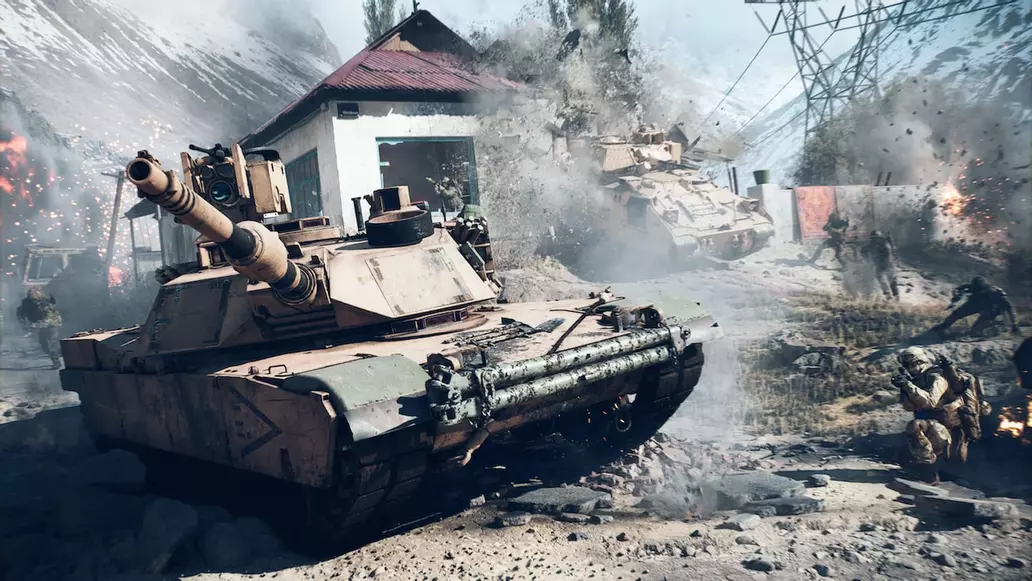The new engine in Battlefield 6 gives you a lot of ways to improve performance, but it can be overwhelming.
Whether you want a higher frame rate (FPS) for a competitive advantage or clearer visuals to see enemies better, the right settings make a huge difference.
This guide, based on our extensive testing, will show you how to adjust everything—from in-game menus to your graphics card settings—so the game looks great and runs smoothly.
Why Graphics Settings Matter

Battlefield 6 runs on a brand-new, upgraded engine. Learning the settings will help all players, from veterans to newcomers.
You can tweak the graphics, BIOS, and hidden config files to either push your FPS to the limit or make enemies easier to spot.
These optimizations will save you time and help you play your best, whether you’re climbing the ranks in Battle Royale or playing with friends.
Accessibility & HUD Customization

First, go to the Accessibility tab to remove distractions.
Turn off menu narration and subtitles for a cleaner interface.
Use bold Color Profiles for enemies and your squad. Choosing a unique color for yourself (like a bright ice-blue) is also helpful, especially for streamers.
Lower unnecessary sound effects, like tinnitus volume, to zero.
Set the relief frequency to 2000.
Camera and Crosshair Settings
Set all camera shake to zero.
Turn chromatic aberration off.
Disable crosshair projection to keep your aim steady.
Heads-Up Display (HUD)
Turn HUD motion settings OFF to stop the screen from shaking.
Decrease advanced icon opacity to reduce clutter and see past objective markers.
Maximize your mini map size and view distance to get more information from UAVs and gunfire.
Turn the infantry compass ON for better team communication.
For your crosshair, use a bright green color with a black outline for the best visibility, even in dark areas.
Core Graphics Settings: The Trade-Offs
Next, go to the Graphics tab. This is where you balance visual quality with frame rate.
Texture Quality: Set to HIGH. The performance loss is tiny, but the game looks much better.
Texture Filtering: Can be set to High with almost no performance cost.
Mesh Quality: Use Medium. On Low, distant objects like trees pop in suddenly, which can hide enemy movement. In Battle Royale, consider High or Ultra for better long-range vision.
Terrain & Undergrowth Quality: Set to Medium or Low. These have little effect on performance or gameplay.
Effects Quality: Set to LOW. This reduces distracting particles from explosions and gunfire, keeping your FPS stable in fights.
Volumetric & Lighting Quality: Set these Low for a clearer view of enemies. The performance impact is small, but the visual clarity is worth it.
Shadow Quality: Medium is the best choice. Low makes shadows look blocky and weird, while Medium gives you realistic shadows without a big FPS drop.
Reflections, Post-Process, and Screen Space Effects: Set all to LOW. These effects hurt performance without helping you play better.
Advanced Performance Settings
High Fidelity Object Amount: Lower this setting if you need a FPS boost. It only affects how smooth distant objects look.
Nvidia Reflex: Keep it ON to reduce input lag, but turn it off if you experience stuttering.
DLSS Quality: If you have an Nvidia card, use this. It greatly boosts FPS on large maps with almost no downside. Avoid DLSS Frame Generation, as it can make the game feel unresponsive.
Field of View (FOV): MAX it out. A wider view lets you see more in your peripheral vision.
Motion Blur & Camera Shake: Turn OFF. These effects make it harder to see clearly.
Full Screen Mode: Use this for the best performance and lowest input lag.
VSync: Turn OFF. It adds significant input lag.
Refresh Rate: Set this to the highest number your monitor supports (e.g., 144Hz, 240Hz). Make sure you’re using the right cable (like DisplayPort) to enable high refresh rates
Driver and System Optimizations
After you’ve set your in-game options, it’s time to tweak your computer itself for the best performance.
Keep Your Drivers Updated
You should always keep your graphics drivers updated, but remember that the newest version isn’t always the best. The creator of this guide found the best performance with NVIDIA driver version 581.42, but this can change with new game updates, so check for the latest recommendations.
Windows Settings
A few simple changes in Windows can help your game run better.
Game Mode: Turn this ON. It tells Windows to give priority to your game.
Game Bar: Turn this OFF. It uses system resources and can cause interruptions.
Graphics Settings: Turn ON “Hardware Accelerated GPU Scheduling” for smoother performance.
Fix Your Mouse Settings
Go to your mouse settings and turn OFF “Enhance Pointer Precision.” This feature is a form of mouse acceleration that makes your aim inconsistent
Nvidia Control Panel Tweaks
This is a key step for getting more frames per second (FPS).
In the “Global 3D Settings” section, make these changes:
Low Latency Mode: ON
Power Management Mode: Prefer Maximum Performance
Threaded Optimization: ON
Vertical Sync (VSync): OFF
Important: After you install new drivers, these settings can sometimes reset, so remember to check them.
Check Your Monitor’s Refresh Rate
In your Windows display settings, make sure you have selected the highest refresh rate (like 144Hz or 240Hz) under the “PC” resolution options, not the “Ultra HD” ones.
Turn Off Game Overlays
Disable the in-game overlays for Steam and the EA app. They can hurt your game’s performance.
Advanced Tuning with Nvidia Profile Inspector
For an extra boost, you can use a free program called “Nvidia Profile Inspector.” The most important step is to first enable Resizable BAR in your computer’s BIOS (you may need to look up a guide for your specific motherboard). Then, use this program to make sure the feature is turned on for Battlefield 6. This can seriously improve your game’s stability, especially if you play in 4K
Config File Tweaks: Going Deep
Inside your installation directory (Steam/EA Docs > Battlefield 6), locate the user.cfg file.
Add:
postprocess.dofmethod 0
WorldRender.MotionBlurEnable 0
These turn off lingering depth-of-field and blur settings not killed by in-game options.
Optional: worldrender.lighttilecspathenable 0 can further boost performance but makes some menu scenes look rough.
PROFSAVE_profile Tweaks
In your PROFSAVE_profile file, set:
GstRender.WeaponDOF 0
This disables weapon blur while zoomed—must be done manually, not available in the menu.
HUD Customization
Copy these config numbers if you want the creator’s exact HUD colors (improves clarity):
GstRender.HUD-Accent -493867777
GstRender.HUD-ArmorHard 1729167359
GstRender.HUD-ArmorSoft 932249599
GstRender.HUD-Enemy -16777216
GstRender.HUD-Friendly 6487808
GstRender.HUD-Neutral 1820760831
GstRender.HUD-Player 9562112
GstRender.HUD-Primary -256
GstRender.HUD-Squad 16715264
GstRender.HUD-Warning -165407745
The Best Way to Stop Stuttering
A key tip for a smooth experience is to cap your frame rate. If your graphics card (GPU) is constantly running at 95-100% usage, you will get stutters and frame drops.
Use a program like Nvidia Control Panel, RivaTuner Statistics Server (included with MSI Afterburner), or the in-game limiter to set a maximum frame rate. This should make your GPU run at about 85-90% usage.
A good rule is to set the cap just a few frames below your monitor’s maximum. For example, if you have a 240Hz monitor, set the cap to 237 FPS. This produces a much smoother and more consistent experience than letting your GPU run at its absolute limit.
Mouse and Key Bindings for Smooth Aim





